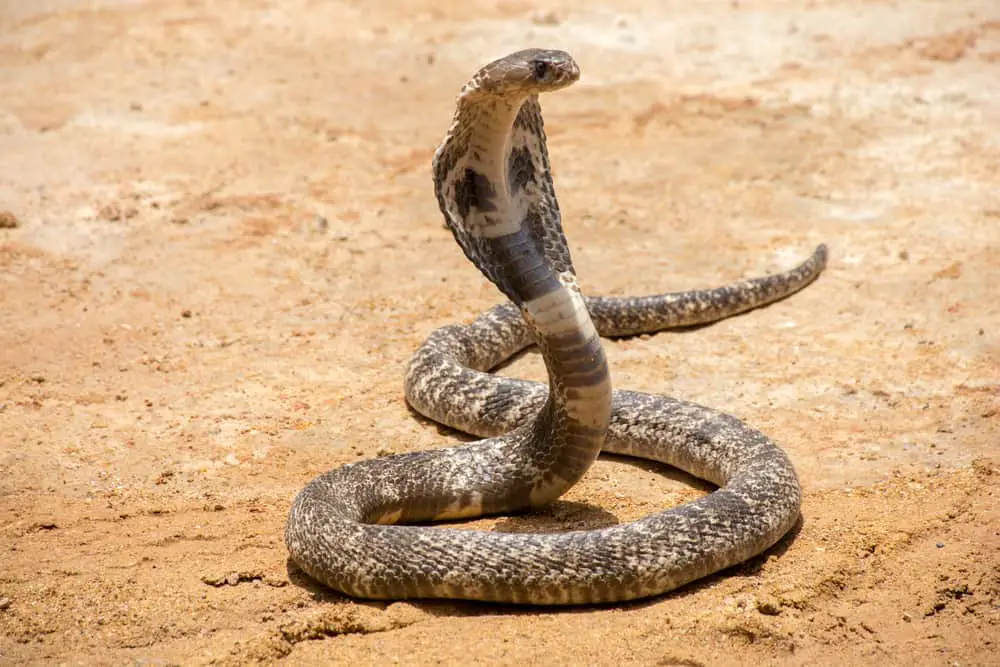
I have always wondered how many different types of King Cobra snakes there are in nature. When researching the topic, I found that there is only one type of King cobra and that some people don’t even regard the King as a real cobra!
King Cobras are the sole member of the genus Ophiophagus hannah, which translates to snake eater. Genetic analysis revealed that the snake was an early offshoot of a genetic lineage that gave rise to the mambas rather than the true cobra genus called Naja.
The Naja genus is widely recognized as “true cobras.” They are the most recognized cobra species and the most widespread. Some people classify any snake that forms part of the Elapidae family as a cobra.
Whatever the case, this article will list some of the best-known types of “true cobras” and also give you some exciting information regarding the King of the Cobras.
Table of Contents
Types of King Cobra Snakes
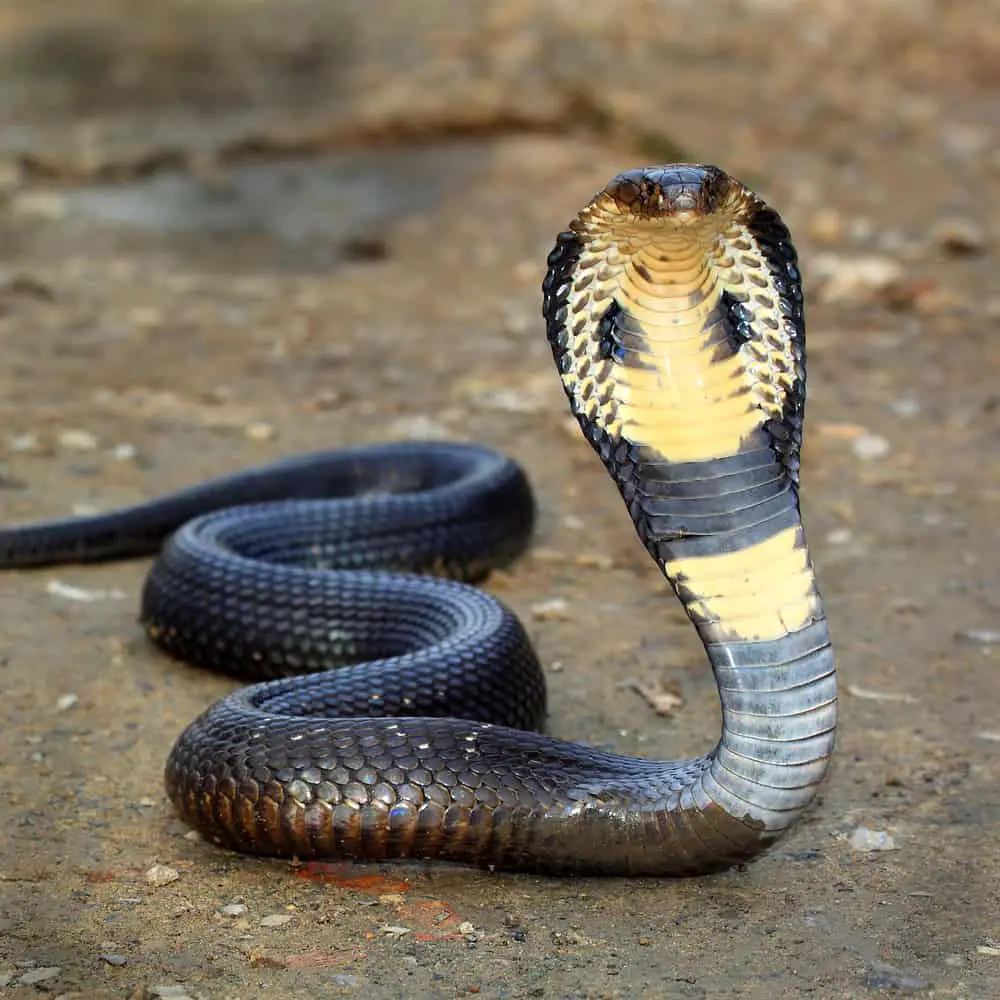
When it comes to cobra snakes, there is only one King. In 1945, Charles Mitchill Bogert, an American herpetologist, had the King cobra’s genus Ophiophagus hannah accepted as the species’ valid name. The King cobra is known as the largest venomous snake in the world.
Using cytochrome b, he concluded that the King cobra was more mamba than cobra during a genetic analysis. Although classified as a snake-eating cobra, other cobras are considered more of a “true cobra.”
The King cobra’s average length is 3 meters, although specimens have been found with lengths over 5 meters. They are widely spread over Asia in India, Bangladesh, Bhutan, Myanmar, China, Laos, Vietnam, Malaysia, Singapore, Indonesia, Cambodia, and the Philippines.
The King cobra eats other cobras, hence the name King, pythons, rat snakes, and lizards. Due to its slow metabolism, it does not have to eat for months after a satisfying meal.
The King cobra, like other snakes, receives chemical information via its forked tongue, and with its sense of earth-born vibrations, can detect moving prey almost 100 meters away.
Characteristics of Cobras
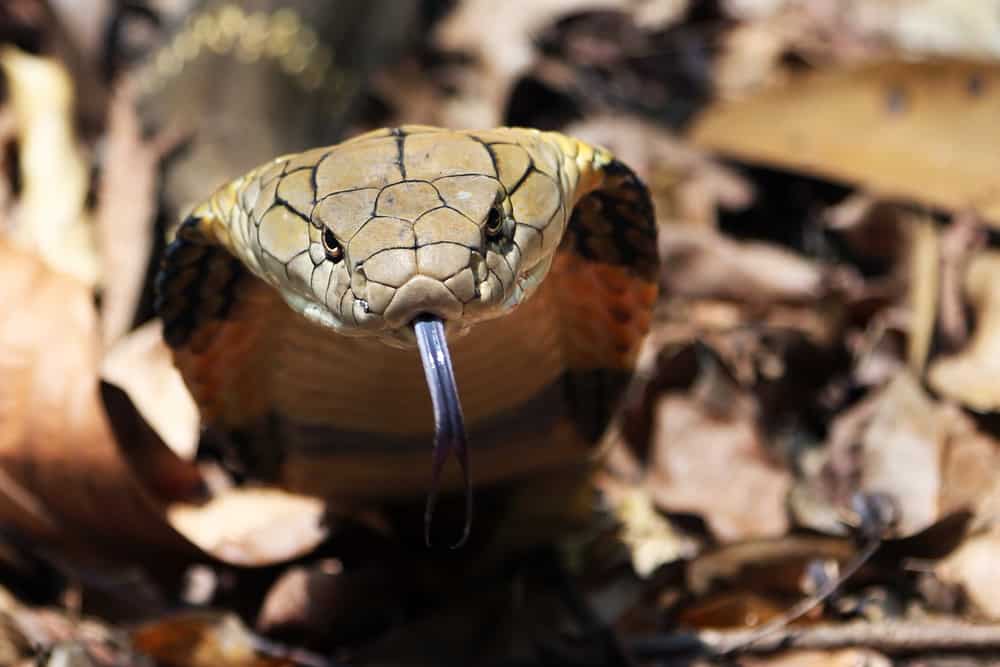
The term ‘‘cobra’’ is an abbreviated word from the Portuguese language, ‘‘cobra de capello’’, which means “snake with hood.” All cobras are venomous elapid snakes that produce a hood when threatened, they do this by spreading out their neck ribs, and it’s visually stunning.
A cobra’s fangs are permanently erect at the front of their mouths and can’t hold their fangs down on prey, so they inject venom through the hollow fangs. Cobras have the uncanny ability to raise their front quarters from the ground, to appear more prominent when attacked by a predator.
How Do Scientists Measure the Venom of Cobra Snakes?
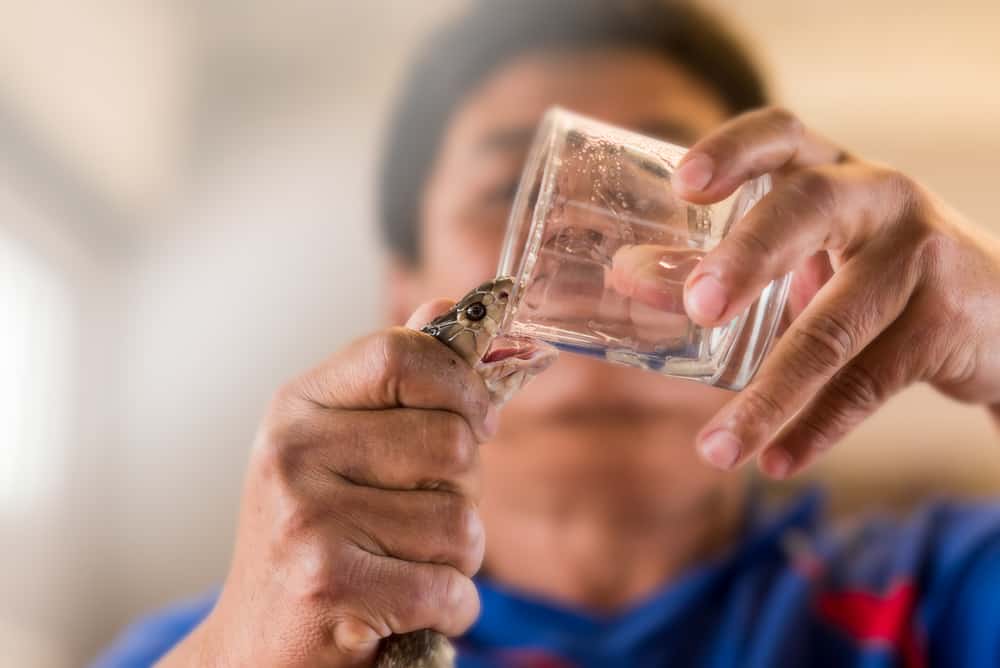
Scientists use two different ways to measure a snake’s venom: First by the venom yield, and secondly, the LD50. Venom yield refers to the amount of venom that a snake can inject or administer with a single bite.
The second measure is the LD50 (a measure of toxicity); LD represents lethal dosage. LD50 is the amount of venom required to kill half of the same population (usually rats or mice.) Higher LD50 indicates less toxic venom, whereas a low LD50 indicates a very potent venom, and it’s generally expressed as the amount of toxin per kilogram/pound of body weight.
Some cobras may have highly toxic venom with an LD50 factor that is very low but may not yield a high enough venom to be deadly. Other snakes’ LD50 rating may be high, but their venom yield could be so high that a bite could cause death.
Three types of venom that snakes produce:
- Neurotoxic Venom
- Cytotoxic Venom
- Hemotoxic Venom
Types Of Cobras
Coming back to the “true cobras” of the genus Naja, let us examine some of the famous cobras that fall under the Naja family and list some of the more poisonous ones.
Caspian Cobra
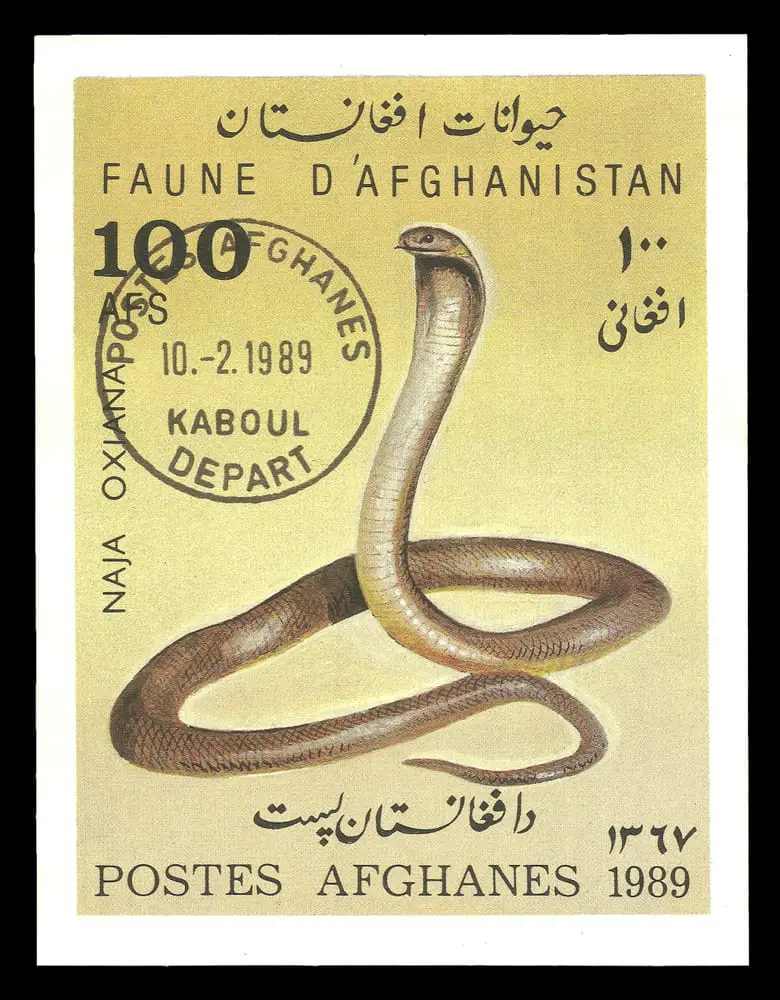
The most venomous cobra in the world is the Caspian cobra of the genus Naja oxiana. This cobra is found in Turkmenistan, Uzbekistan, Tajikistan, Kyrgyzstan, Pakistan, Iran, India, and Afghanistan. The cobra has an LD50 rating of 0.10 mg per kilogram.
This cobra can be found in rocky, semiarid mountain foothills or 3,000 meters above sea level. Climbing and swimming are second nature for the Caspian, and its diet consists of birds, small mammals, and amphibians.
The Caspian cobra is an aggressive snake and is famous for its bad temper. When the snake is in danger, it will spread its hood, hiss, sway, and strike continuously. If a Caspian ever bites you, you will experience neurotoxicity, swelling, and excruciating pain.
If you leave the bite untreated, you have a 70-80% chance of dying. The Caspian cobra is related to a high number of deaths in Central Asia. This cobra is from the genus Naja oxiana.
Philippine Cobra
This cobra is native to the northern Philippines. You can find it in various habitats, ranging from grasslands, crop fields, dense jungles, low-lying plains, and human settlements. The Philippine cobra is commonly found close to water sources and could make the Olympic swimming team without trying. The snake has an LD50 rating of 0.14 mg per kilogram.
Philippine cobras love to feed on small mammals, frogs, small snakes. Rodents like mice and rats are their favorite dish, but they will settle for some bird if the meal presents itself. Philippine cobras are wary of predators, including birds of prey, mongoose, and the King cobra.
These spitting cobras can hit a target 3 meters away, and their venom is a potent postsynaptic neurotoxin. Symptoms related to the venom entering your body can include:
- Headache
- Abdominal pain
- Nausea
- Diarrhea
- Dizziness
- Breathing difficulties
- Vomiting
Deaths caused by the Philippine cobra’s venom are typically due to respiratory failure. This cobra is from the genus Naja philippinensis.
Samar Cobra
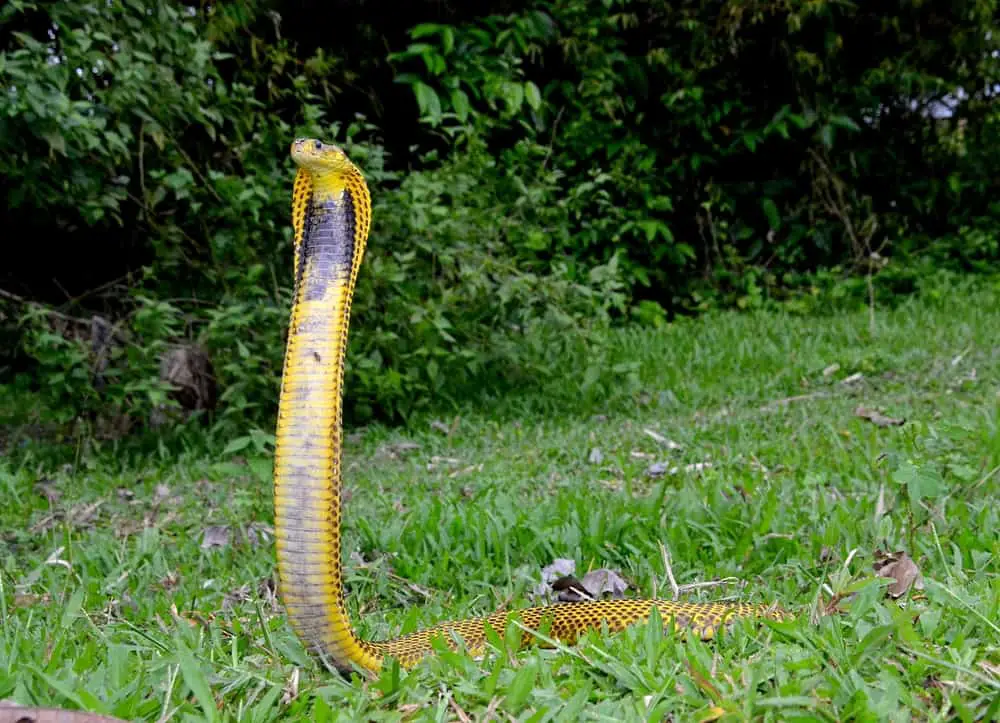
This venomous spitting cobra is a native to the Visayas and Mindanao Island groups of the Philippines. The Samar cobra is from the genus Naja samarensis and is also known as Peters’ cobra or the Visayan cobra. The habitat of these cobra’s ranges from tropical plains to alpine jungles. The cobra has an LD50 rating of 0.21 mg per kilogram.
Samar cobras prefer to dine on rodents but will consume other reptiles and frogs if this is their only menu option. These cobra’s color varies from black and yellow to green, and they can grow to an average of 1.4 meters. Samar cobras are oviparous and can lay clutches of up to eight eggs.
The cobra typically displays nervous behavior and will resort to spraying venom at any perceived threat. These cobras produce a deadly neurotoxin venom with cytotoxic properties. Should venom enter the eye, it can result in permanent blindness if left untreated, and a bite wound can cause tissue necrosis around the bite site.
Forest Cobra
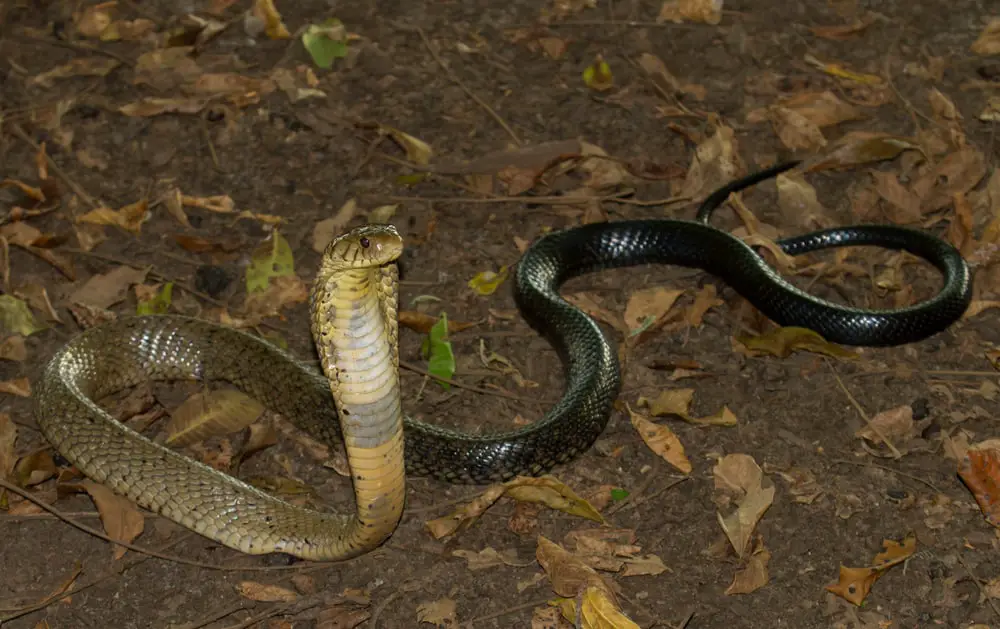
The Forest cobra hails from Africa, mainly western and central, and is from the genus Naja melanoleuca. Don’t let the name fool you; forest cobras can be found in various environments: lowland forests, savannas, and even dry ecoregions. These cobras have an LD50 rating of 0.225 mg per kilogram.
Forest cobras are the largest “true cobra,” The record length for this type of snake is 3.2 meters (10 feet.), with an average size ranging from 1.4 to 2.2 meters. Their diet includes insects, reptiles, and small mammals. It does not fear water, and some observers have noted that the cobra is semi-aquatic.
Male and females grow to the same length, and there is no sexual dimorphism found within the species. Forest cobras are nervous animals and always on high alert. Their venom contains a potent neurotoxic element and possesses a high venom yield that can cause death by envenomation within 30-120 minutes.
Indochinese Spitting Cobra
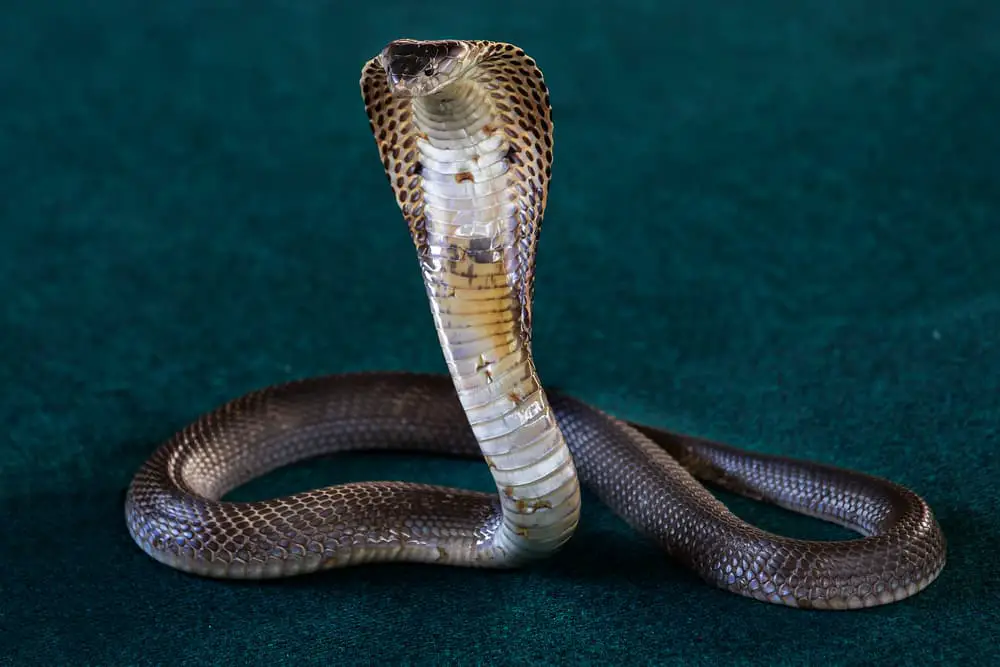
The Indochinese spitting cobra, also known as Thai spitting cobra or Siamese spitting cobra, is found in Southeast Asia, in Vietnam, Laos, Cambodia, and Thailand. These cobras inhabit woodlands, hills, plains, and lowlands. The Indochinese spitting cobra is the fifth most venomous cobra with an LD50 rating of 0.25 mg per kilogram.
These cobras have a body color that ranges from grey to brown to black, with white stripes or spots. In Thailand, they are a distinctive black and white. Adult lengths average between 0.9 to 1.2 meters, potentially reaching a length of 1.6 meters, which is rare.
This species of cobra exhibits erratic behavior. It’s better to run into them in the daytime as they are timid than aggressive during the nighttime. This species of cobras are considered “true spitters.” It can readily spit venom, but instead of spitting a stream, they eject a mist of poison with a range of one meter.
The Indochinese spitting cobra’s venom is a deadly combination of a potent neurotoxin and cytotoxin. If left untreated, a human can die from muscle paralysis and asphyxiation. Bite symptoms include the following:
- Pain
- Swelling
- Necrosis
If the mist enters your eye area, you will experience immediate pain, and left untreated can lead to permanent blindness. Indochinese spitting cobras are from the genus Naja siamensis.
Chinese Cobra
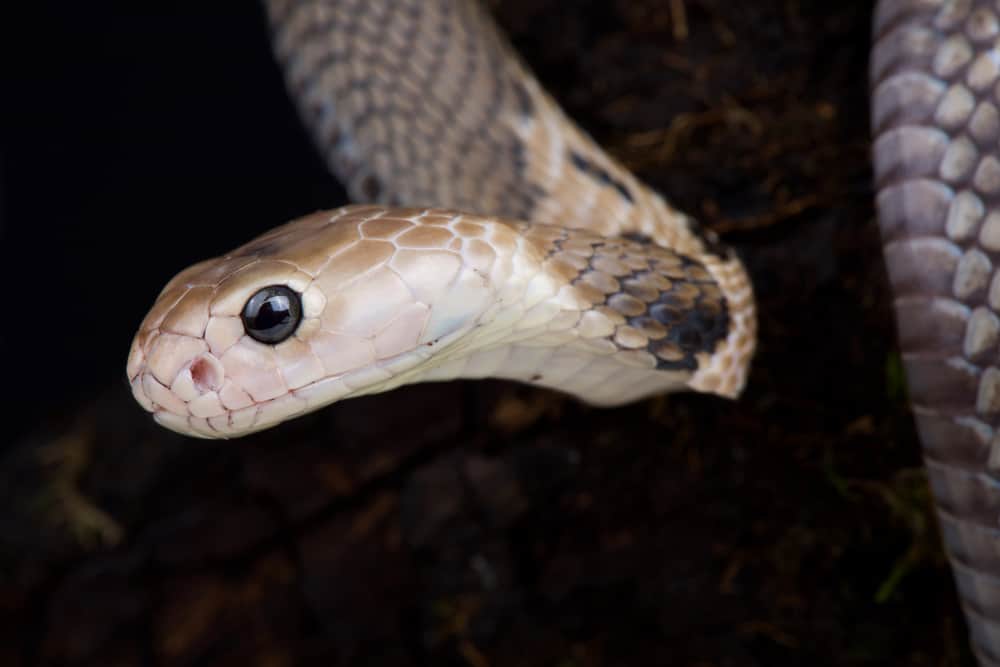
The Chinese cobra, also known as the Taiwan cobra, is from the genus Naja atra. These cobras are found in Southern China, Laos, Hong Kong, Vietnam, and Taiwan, where their natural habitat is in grasslands, woodlands, and mangroves. This species has an LD50 rating of 0.28 mg per kilogram.
If you are a mountain climber, make sure to ascend to a height higher than 6,600 feet, as this is the height where some of these cobras live. The Chinese cobra eats rodents, toads, frogs, birds, and other snakes. They are shimmery black with or without transversal grey or white lines. They are equally active during the day or night.
Adult lengths vary from 1.2 to 1.5 meters, with a maximum length of 2 meters. This cobra’s venom contains neurotoxins and cardiotoxins, causing death in almost 15% of people bitten. The Chinese cobra bite symptoms include:
- Darkening of the wound
- Localized redness
- Swelling
- Pain
- Insensibility
- Blisters
- Necrosis
- Chest discomfort
- Fever
- Lockjaw
Indian Cobra
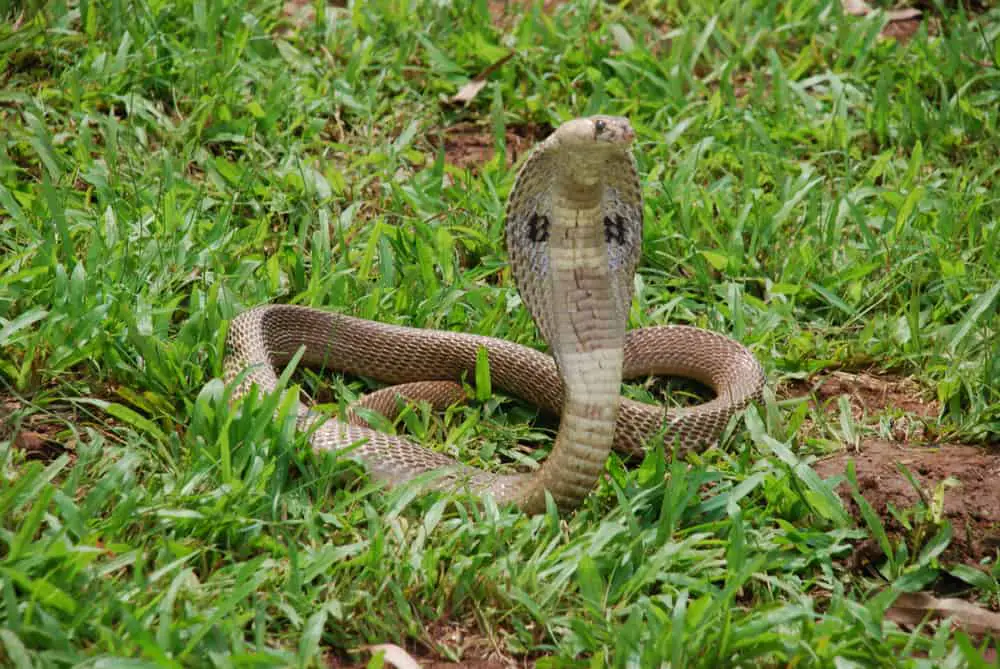
The Indian cobra is from the genus Naja naja, also known as the spectacled cobra or Asian cobra, which is considered the prototypical cobra species within the genus Naja. These cobras are found in India, Sri Lanka, Pakistan, Bangladesh, Bhutan, and Nepal. Indian cobras have an LD50 rating of 0.29 mg per kilogram.
Ever seen a snake charmer with a cobra snake? That snake is an Indian cobra, and they are revered in Indian mythology and culture. The cobra is protected under India’s Wildlife Protection Act, 1972. Indian cobras are found in open and dense forests, rocky terrain, wetlands, but not proper desert regions.
The Indian cobra forms part of the “big four” species that inflict the most snakebites on people of India; the others are:
- Common Krait
- Russell’s Viper
- Echis (Saw-scaled Viper)
The Indian cobra’s venom contains a powerful cardiotoxin and neurotoxin that can cause death or paralyze muscles. In the last 20 years, over 1.2 million people have died from snakebites in India. The big four snake species listed above were responsible for most of these deaths.
Cape Cobra
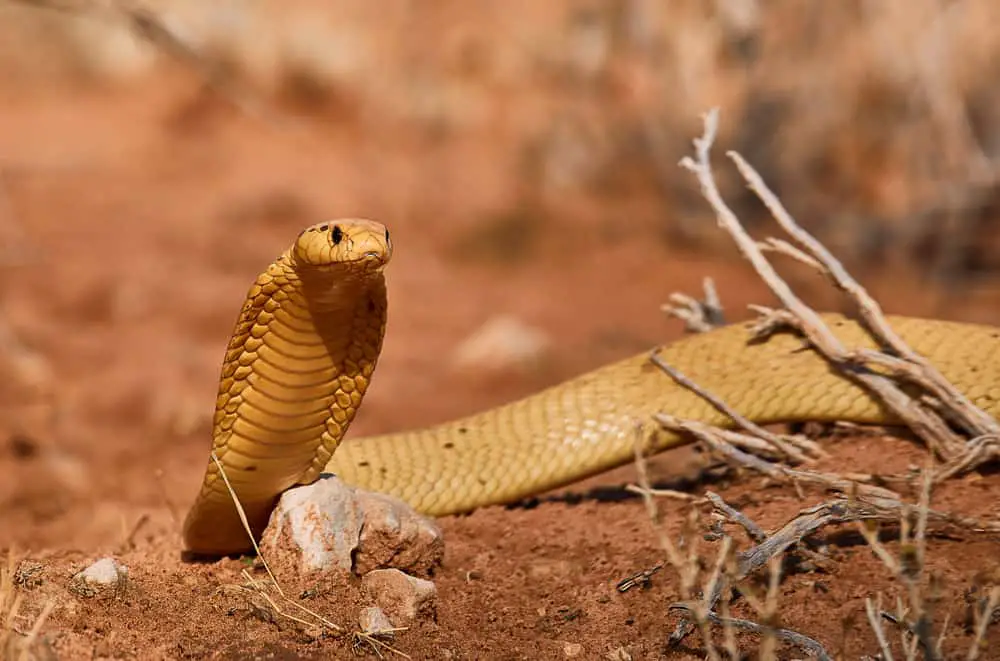
The Cape cobra is from the genus Naja nivea and is also referred to as yellow cobra. These cobras are endemic to southern Africa and are found across South Africa, Botswana, and southern Namibia. Cape cobras love the desert and scrublands of the areas mentioned above. These cobras have an LD50 rating of 0.37 mg per kilogram.
Cape cobras love dry sandy desert areas, grassland, and fynbos habitats. These snakes can climb trees and shrubs, searching for young birds and eggs. Cape cobras hunt during the day for rodents, birds, lizards, frogs, and other snakes. They bite their prey and do not spit venom as some other cobra’s do.
Cape cobras venom contains a mixture of cytotoxic and neurotoxic components that can cause respiratory failure that can lead to death. Cape cobras’ mate between September and October, the female usually lays up to twenty eggs, and the hatchlings are completely independent when they hatch.
Equatorial Spitting Cobra
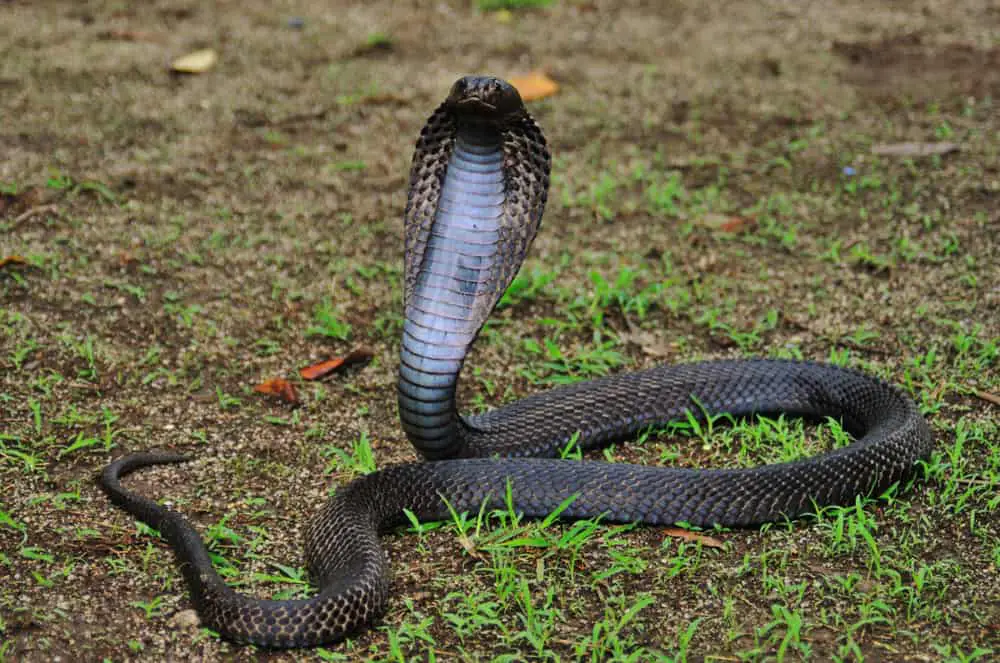
The Equatorial spitting cobra is found in the southeast Asian nations of Indonesia, Brunei, Singapore, Malaysia, Thailand, and the Philippines. Suppose you are visiting the islands of Indonesia lookout for them on Borneo, Sumatra, Belitung, Bangka, and Riau Archipelago. These cobras have an LD50 rating of 0.60 mg per kilogram.
Equatorial spitting cobras love primary and secondary tropical forests, including dense jungles, but have been found in parks, gardens, and urban areas. They can live as high up as 4,900 feet (1,500 meters.) They feed on rodents but will also feed on snakes, lizards, and other small mammals.
The Equatorial spitting cobra’s venom is a toxic mixture of cytotoxins, cardiotoxins, and neurotoxins. When threatened, they will spit and bite if required to survive. The species found in Thailand have a more yellow form, whereas the cobras found in Malaysia, Singapore, and some other peninsular islands have primarily black cobras.
Hence, they are also known as the black spitting cobra and the yellow spitting cobra. These cobras are from the genus Naja sumatrana.
Conclusion
The King cobra is a cobra species on its own. They are not considered to be true cobras as they don’t belong to the genus Naja. Whatever you want to class the King cobra is, remember that this snake eats other cobras and is rightfully viewed as the King of the Cobras.
The other cobras, “true cobras,” listed above, are all dangerous and highly venomous species. They all differ in size and toxicity, but one thing is for sure, you don’t want to be bitten, spat at, or sprayed by these snakes unless you are a mongoose.
References:
Animal Corner: King Cobra Snakes – Facts, Pictures & Habitat Information
Animal Start: 10 Different Types of Cobras (With Pictures)
National Geographic: King cobra, facts and photos
World Atlas: How Many Types Of Cobras Are There? Which Species Are Most Venomous?
Cobras: Types of Cobras: The Secret List
Top10HM: Top 10 most dangerous cobra snakes
Mental Floss: 12 Ferocious Facts About King Cobras
Department of Agriculture and Fisheries: Cobra Risk Assessment
Live Science: Facts About Cobras



